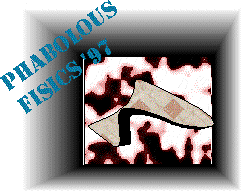To Measure the wavelength of monochromatic light
(Thomas O'Sullivan 1997)
Apparatus: Spectrometer, diffraction grating(s), sodium vapour lamp.

Method:
- Adjust the eyepiece until the cross wires are seen clearly. Usually this entails pulling or pushing the eyepiece in or out.
- Focus the telescope of the spectrometer on a far off object (e.g. an Arial or a chimney), so that the object and the cross wires are without parallax.
- Illuminate the collimators slits.
- Set up the spectrometer as in the diagram. The telescope is now arranged to view far off objects, so the illuminated slits should appear in focus, when viewed through the telescope. (The slits are at the focus of the collimator's lens and light from them appears to come from infinity). If the slits are not in focus, the collimator's lens can be adjusted.
- Using a spirit level, make the spectrometers table level by adjusting the screws underneath.
- Place the diffraction grating on the spectrometer's table perpendicular to the direction of the light. The diffraction grating element should be noted. (Normally 300 lines/mm or 600 lines/mm).
- The first order image to the left should now be located by moving the telescope to the left. When it is found the vertical cross wire should be lined up along the left hand side of the slit. This position should then be read on the vernier scale. The vernier reading is taken as follows:
- Note the position on the main scale that the 0 on the vernier scale is pointing to. In this example 76° 30²
- Find the value on the vernier scale at which a division from each scale overlaps. Here this is 7.
- Add this value on to the main scale reading i.e. 76° 30² . This gives the required reading, 76° 37² .

- The first order image to the right should now be located by moving the telescope to the right. Once again, the cross hairs should be lined up along the left hand side of the slit. (This is more accurate then guessing where the centre of the slit is each time.) The new position should be read off the scale.
- This procedure is then repeated for second, third, ... order images.
- The results are then tabulated.
Results: The following table should be filled and the values of l averaged. To find d:
- Note the grating element. e.g. 300 lines/mm
- Write this as lines per metre. 300 x 1000 lines /m
- The reciprocal of this gives the distance between the lines: d =
 m.
m.
|
n |
q -Left |
q -Right |
2q |
q |

|
l = |
|
1 |
|
|
|
|
|
|
|
2 |
|
|
|
|
|
|
Return to Thomas O'Sullivan's Homepage



